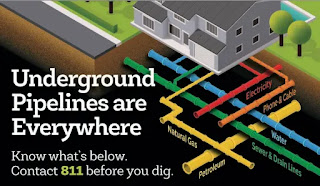In 2020, the City of Richmond Department of
Public Utilities was converting 7,500 streetlight fixtures to LED
lighting, meeting sustainability, safety and security needs. Streetlights are
an important factor in public safety and quality of life, providing lighting
for both residential and commercial uses. Light-emitting diodes (LEDs) will
replace the present use of standard high pressure sodium vapor streetlights
following a successful pilot project which tested the newer technology. LED lights
are up to 80 percent more efficient than other lighting sources and use far less
energy, thus reducing greenhouse gas emissions.
“I am
proud that the streetlighting conversion project is moving forward. At a time
when environmental impacts of our actions are felt more than ever, this
project ties into the goals and road map laid out in my RVAgreen 2050
initiative,” said Mayor Levar Stoney.
 |
| Crews readying to convert fixture |
When the
city’s streetlights were first installed in 1845, they were powered by coal
gas. Over the years, as the lighting source technology changed, the city has
kept up with those changes in its streetlighting network. This LED conversion
of the 7,500 fixtures is occurring through 2022. The majority
of these replacements will take place along the roadways in the city’s
Southside.
The
existing fixtures use standard High Pressure Sodium Vapor (HPSV) lamps with a
warmer color temperature (yellow light). The new LED fixtures will have a
cooler color temperature (moonlight color), which will enhance visibility and
provide better color rendering. The LED fixtures will also provide better
efficiency, reliability and maintainability.
 |
| Old technology (l); new technology (r) |
The
projected useful life of LED lighting is 20 years per fixture, compared to
an average of five years for the current lighting technology used in the city.
Although the initial cost per fixture of the current lighting technology is
$240 compared to $440 for the LED fixtures, the increase in useful life per
fixture of the LED technology will result in a 54 percent cost savings for the city.
The cost savings will be realized by a reduced replacement rate for the LED
fixtures, an estimated 40 percent reduction in energy costs as well as reduced
maintenance costs.
The city
underwent a multi-faceted pilot project in 2018 testing and evaluating the technology
on existing infrastructure to determine its feasibility and needed upgrades.
The pilot focused on six areas and included the installation of three different
style fixtures to assess the new lighting technology. Those six areas were Richmond Highway, Brook Road, Forest Hill Avenue, New Kent Avenue,
Boston Avenue Alley and Wentbridge Road Alley. The pilot project resulted in a
design reference with specifications on acceptable lighting source parameters
and range of lumens output acceptable for both roadways and alleys as well as
proper electrical characteristics for the distribution grid.



